MSPO 2020: Polish PGMs and Anti-Aircraft Missiles
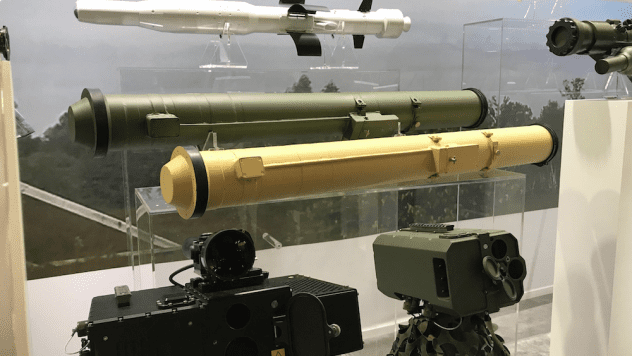
CRW Telesystem-Mesko and Mesko S.A. were showcasing the complete portfolio of their products, during this year’s edition of the MSPO event. The demonstrated assets included the means that could be used to increase the precision strike capabilities of the artillery units (155 and 120 mm laser-guided artillery rounds), the effectiveness of the anti-aircraft units (“Piorun” MANPADS), and anti-tank capabilities (“Pirat” ATGM).
The joint stand of Telesystem-Mesko and Mesko was used to showcase solutions already introduced into the inventory of the Polish military (“Piorun” MANPADS), ones ready for rapid implementation (155 mm artillery rounds), and solutions at the final stage of their development (120 mm mortar rounds and “Pirat” ATGM).
Piorun MANPADS
Piorun MANPADS is one step ahead of the legacy “Grom” systems. It offers better resistance to countermeasures and also allows the user to act against the most challenging, low-signature threats. The new system also offers a better range (6.5 km) and maximum altitude at which the targets could be engaged (4 km).
This has been possible thanks to a new seeker manufactured by Telesystem-Mesko. The missile utilizes a new photo-diodes based seeker (the older seekers, such as the unit embedded in the “Grom” MANPADS, used photoresistors instead). Thanks to the above the gain performance of the system is much better, it also offers longer operation time (up to 16 seconds). This translates into an extension of the range (beyond 6 kilometres) - as the missile is effective as long as the photodetector remains cooled.
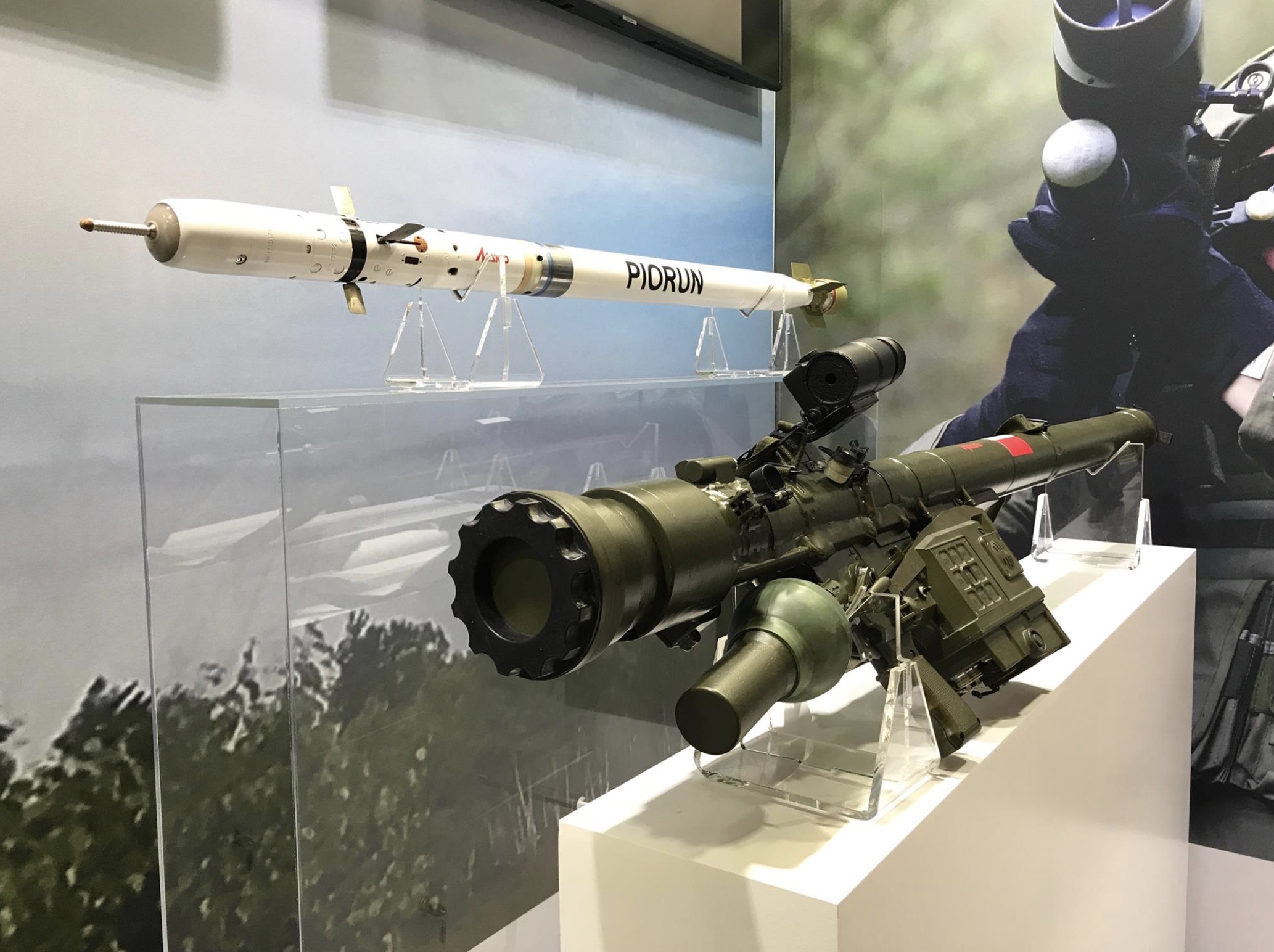
Polish “Piorun” MANPADS has three types of fuses.
- The proximity fuse activated at a close distance to the target, which heightens the probability of effective target neutralization.
- Impact fuse with a delay timer, so that the missile could penetrate the first layer, and thus place the explosive inside the target.
- Eddy-current electromagnetic fuse – immediately activated fuse that is initiated when the seeker penetrates a layer of metal and enters the interior of an aircraft for instance.
The values and parameters for those fuses are automatically selected by the system, depending on the engagement mode (pursuit, head-on engagement, engagement against a stationary target). The dynamics of manoeuvres and engagement speeds are different then. The engagement mode is selected by the operator with the use of a special switch on the trigger mechanism, shortly before the launch (“pursuit” or “head-on engagement” options are available). This enhances the system’s performance, even in tough conditions.
Some of the user-experience features of the “Piorun” system are also important here. These include the use of a thermal imaging system (allowing for night engagements) and a digital launch system with a recorder (that makes it possible to replay the engagement sequence). The system also features an authorization system that does not allow unauthorized personnel to use it.
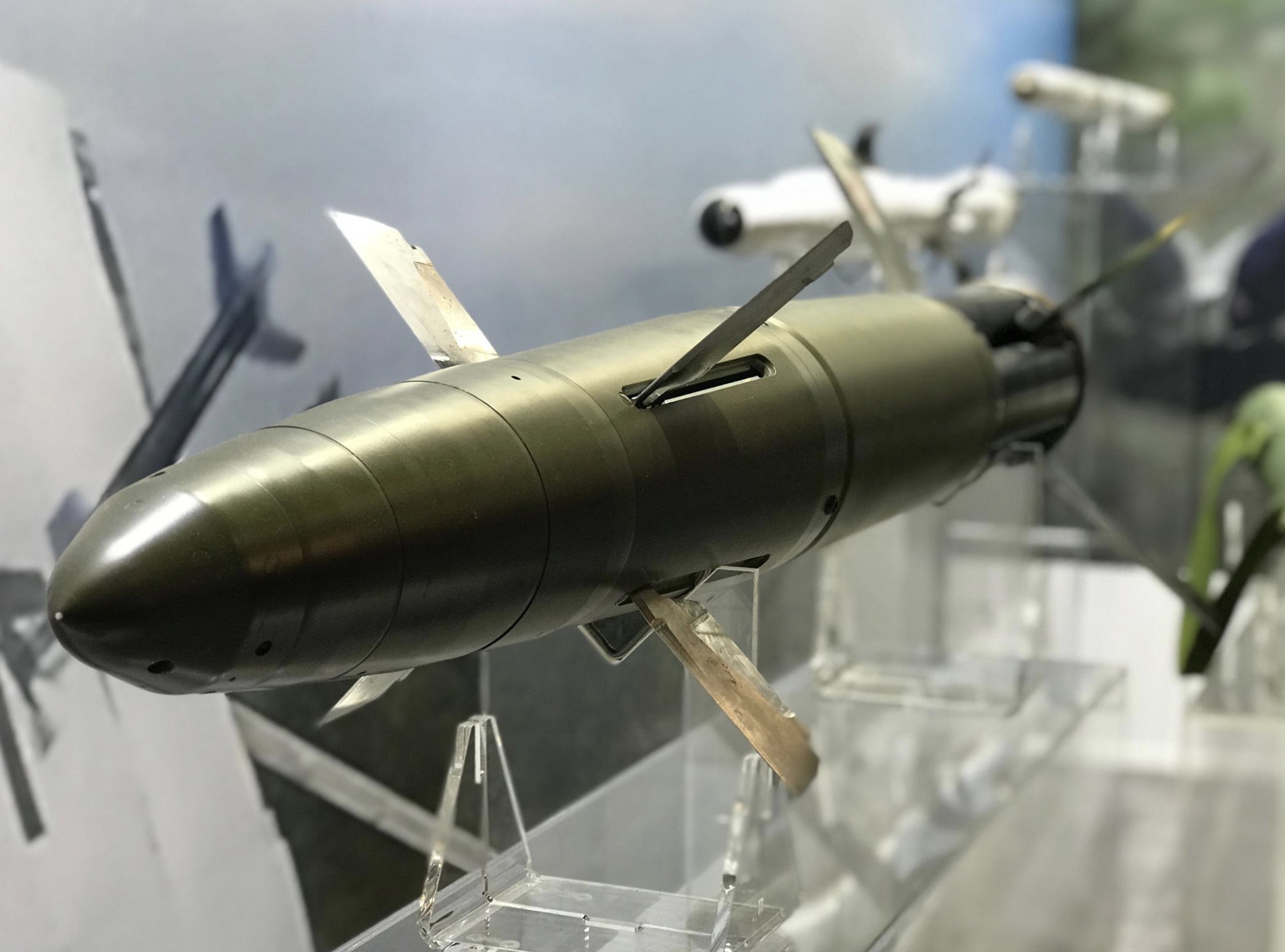
155 mm and 120 mm Precision-Guided Munitions
The Polish industry is currently working on two types of laser-guided precision-guided rounds (APR, PGM) - for the 155 mm howitzers (Krab and Kryl - APR 155) and the 120 mm self-propelled mortars (Rak - APR 120). The ammunition is guided with the use of the LPC-1 laser target designator developed via a joint R&D effort undertaken by the following companies: MESKO S.A. and CRW Telesystem Mesko. The success is even more significant, as the Polish laser-target designator is encoded and fully compatible with the NATO systems, thus it can also work with other allied fire control systems. During the MSPO the companies also showcased a much lighter (less than 4.5 kg) solution - the LPD-A laser target designator. It still offers all of the capabilities of the LPC-1 system and it can also be used to guide the Pirat ATGMs.
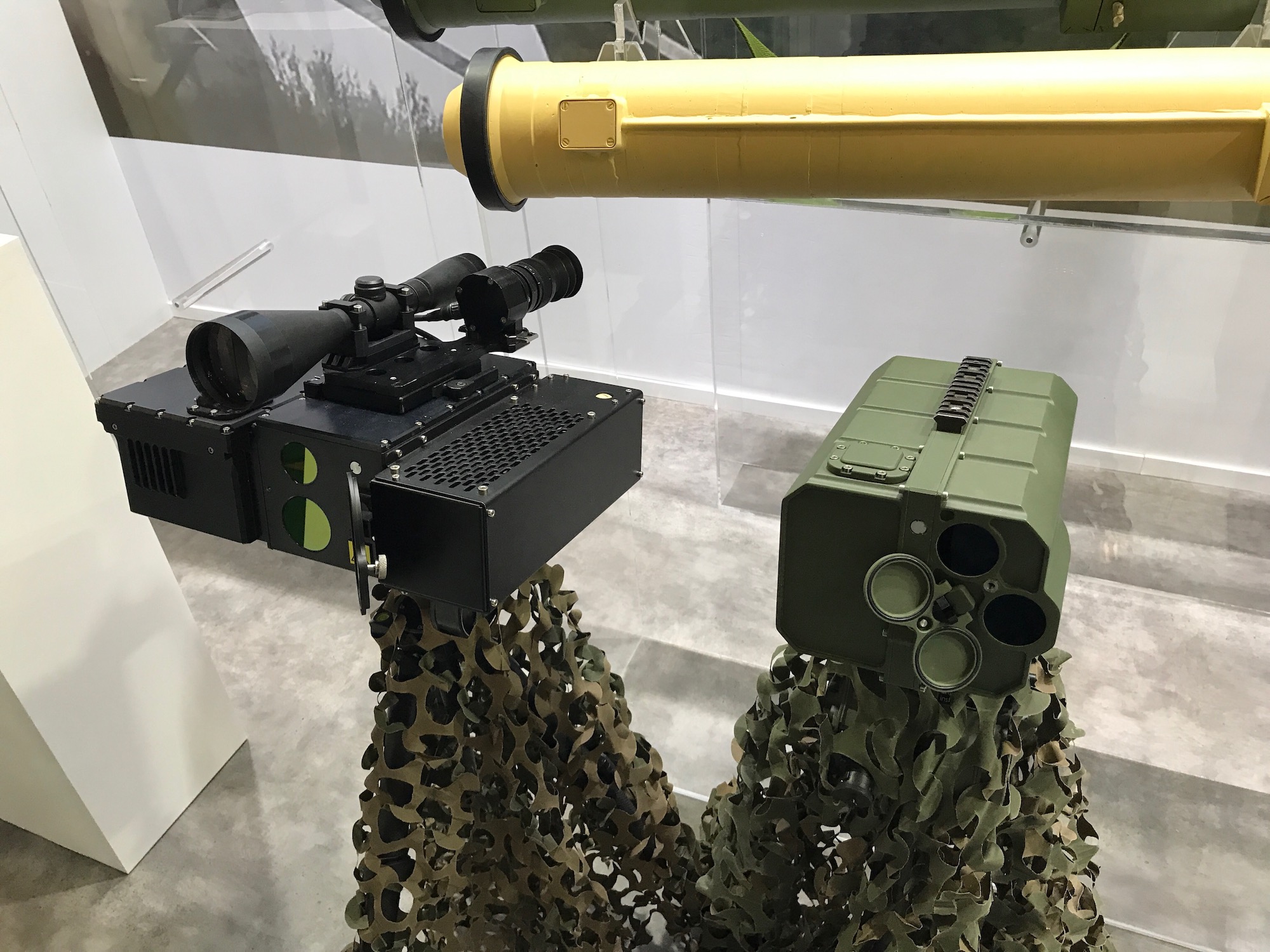
The APR 155 rounds are a major force multiplier for the REGINA Squadron-level Fire Modules, equipped with the Krab self-propelled howitzers. These rounds could also be used with the Kryl self-propelled howitzer systems as well. The APR 155 rounds have been proven to be effective already, during the recent field tests that took place in July 2020. Two rounds were fired against targets 8 kilometres away, hitting the laser-designated point. The test measurements have shown that the components of the system function flawlessly. Operation of the seeker and the autopilot (based on Polish avionics) was verified, along with the Polish sustainer motor propellant.
The previous field tests had yielded positive results as well. The APR 155 prototype rounds were fired on 18th November 2016 at a distance of more than 15.3 kilometres. Despite the heavy wind conditions, the rounds have hit a target of dimensions of 2x2 metres, with 0.3 and 0.6 metres deviation from the target (with the designator located 500 metres from the target). Ukrainian semi-active 9E421 seeker has been used at the time, while the LPC-1 designator was operated in neutral mode.
The project is pursued by Mesko S.A. working with the Military Military University of Technology, CRW Telesystem Mesko, and the foreign partner - the PROGRESS business from Ukraine. The whole undertaking is in its final stages now, with finalization scheduled to happen in December 2020. The manufacturing capacity is scheduled to be established in 2021.
APR 120 mortar rounds are even more advanced when it comes to their development. This ammunition is destined to be integrated with the Polish “Rak” self-propelled automatic mortar. The AP round that is 800 mm long and that weighs 16.8 kilograms (120 mm calibre) is to be used for precise neutralization of armoured targets at distances of up to 8 kilometres, with those targets being attacked from the topside - the weakest point of the turret and the hull. APR 120 has been fitted with a single-stage shaped charge warhead. Its performance “satisfies” the demands made by the military. The option of creating a HE variant of this round is also being considered.
The APR 120 design effort was more challenging than the same process pertaining to the APR 155, based on the operationally used Ukrainian 152 mm rounds. The APR 120 round, starting from the concept phase, was being developed by a joint team of Polish and Ukrainian experts. The Poles decided to design the front section electronics, while the Ukrainians were tasked with developing a control system.
Initially, it was assumed that a guided bomb-like system would be used for that purpose. However, length limitations made the above impossible (ca. 800 mm). That limitation stemmed from the fact that the round was to be accommodated within the “Rak” mortar’s autoloader system.
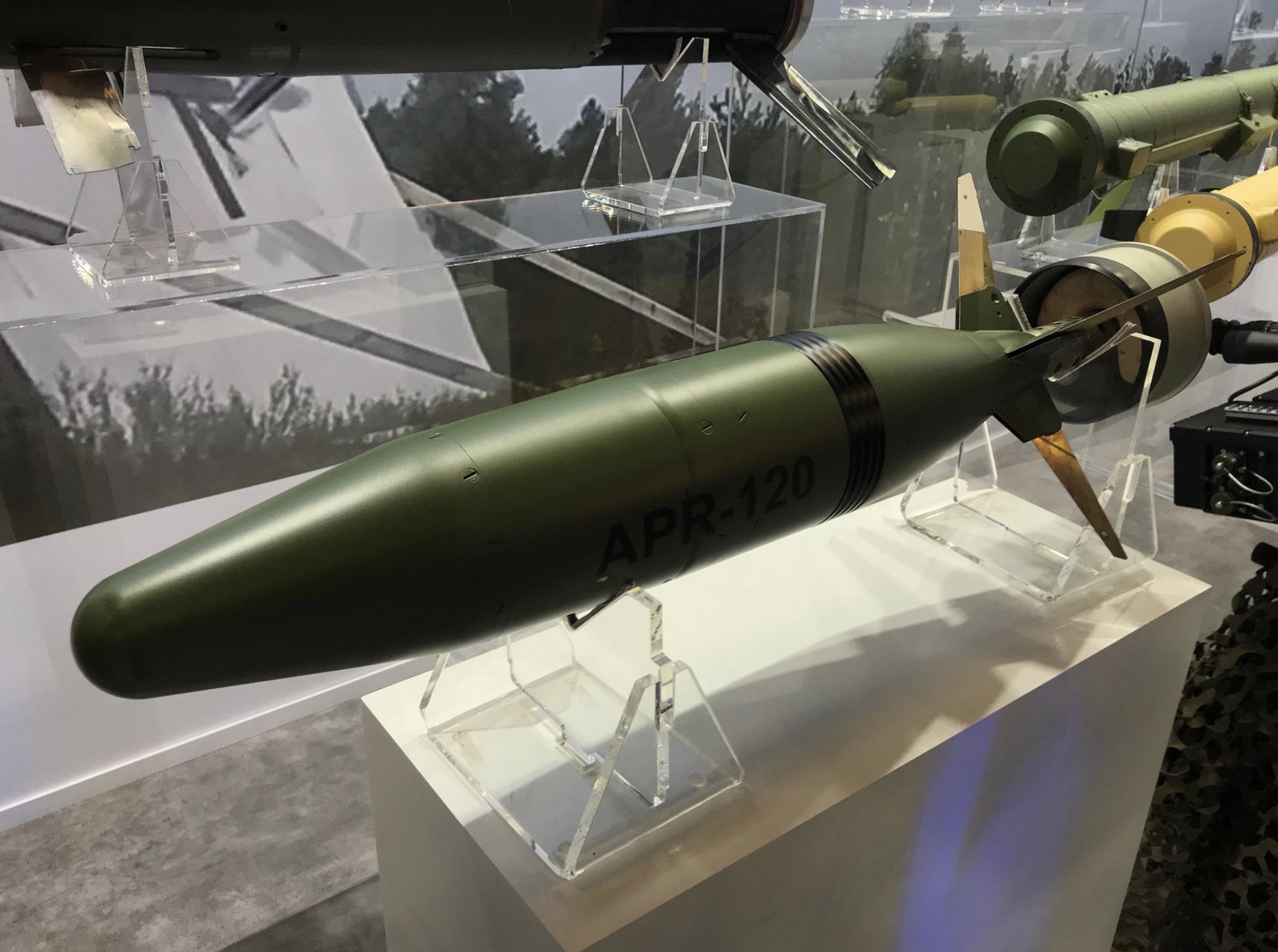
The Poles proposed that an inertial guidance system is used instead, with the round itself becoming a gyroscope, with the optical system becoming fixed (changed design). APR 120 became a unique, Polish-Ukrainian solution, having no counterpart anywhere in the world. Solely Israel uses a similar gyro-less electronic guidance solution, in case of which the round rotation is stopped, contrary to the Polish system.
Not only is the APR 120 round stabilized, but it is also a laser-guided projectile. If the Polish-Ukrainian guidance system passes the test programme successfully, PGM application included, then mortar guided rounds can enter production as early as in 2021.
“Pirat” Light ATGM
“Pirat” light ATGM is another solution among the effectors using the laser guidance systems. It is developed by a consortium formed by the following entities: Mesko S.A. based in Skarżysko- Kamienna (leader) and Telesystem-Mesko Sp. z o.o. based in Lubicze near Warsaw, working with the Military University of Technology and the Ukrainian DKKB Luch company. The work is in its final stages as for now. The manufacturing capacity is to be established in 2021.
Tests carried out at the Military Institute of Armament Technology range in Nowa Dęba on 15th July 2020 were to confirm the correctness of the assumptions adopted and to verify the R&D solutions applied in practice. The tests were to verify the operation of the Polish sustainer and launch motors and assess the guidance accuracy at distances of 500 and 2,400 meters. LPC-1 laser target designator was used here. The results did confirm the full functionality of the domestically-developed rocket motors and the accuracy that the guidance system provides - in field conditions.
“Pirat” system has been developed to act against land and air threats at any time of day or night. The threat range includes:
- • Contemporary mobile armoured vehicles, with combined, scattered, or monolithic armour (ERA included);
- Small land targets, such as fortifications, stationary MBT, light armour;
- Helicopters.
Light portable ATGM is the primary element of the missile. It is a laser-guided effector, guided
towards laser beam reflected from the target. The digital guidance system allows the user to conduct direct (frontal) and top-attack engagements - this extends the missile’s performance envelope when it is employed against heavy armour or even main battle tanks. It is also very much resistant to enemy countermeasures. The missile could be shoulder-launched, stationarily launched (with the station being a modular system for detection, tracking, identification, and target designation, and including a tripod-based launcher). The launcher may also be integrated onto vehicles and vessels. The missile itself can be used to act against targets at ranges from 200 to 2,500 meters.
“PIRAT” follows the target automatically, and automatically adjusts the missile trajectory, with the missile flying towards the laser-designated point. The laser designator here is identical as the one used for the APR 120 and APR 155 PGMs. In the future, the flexibility of this system could be enhanced by the option of using a greater variety of effectors. So far the work has been launched mainly with regards to anti-tank missiles featuring a shaped-charge warhead. However, it is assumed that HE or thermobaric warheads could also be integrated with the said missile in the future.
Considering the combat capabilities that it offers, we can clearly see that Pirat addresses the requirements and expectations of the Polish Ministry of Defence expressed through the Pustelnik and Ottokar-Brzoza procurement programmes. These have been included in the 2021-2035 Technical Modernization Plan being aimed at adding and reinforcing new capabilities in the anti-tank domain, within the Polish Armed Forces.
